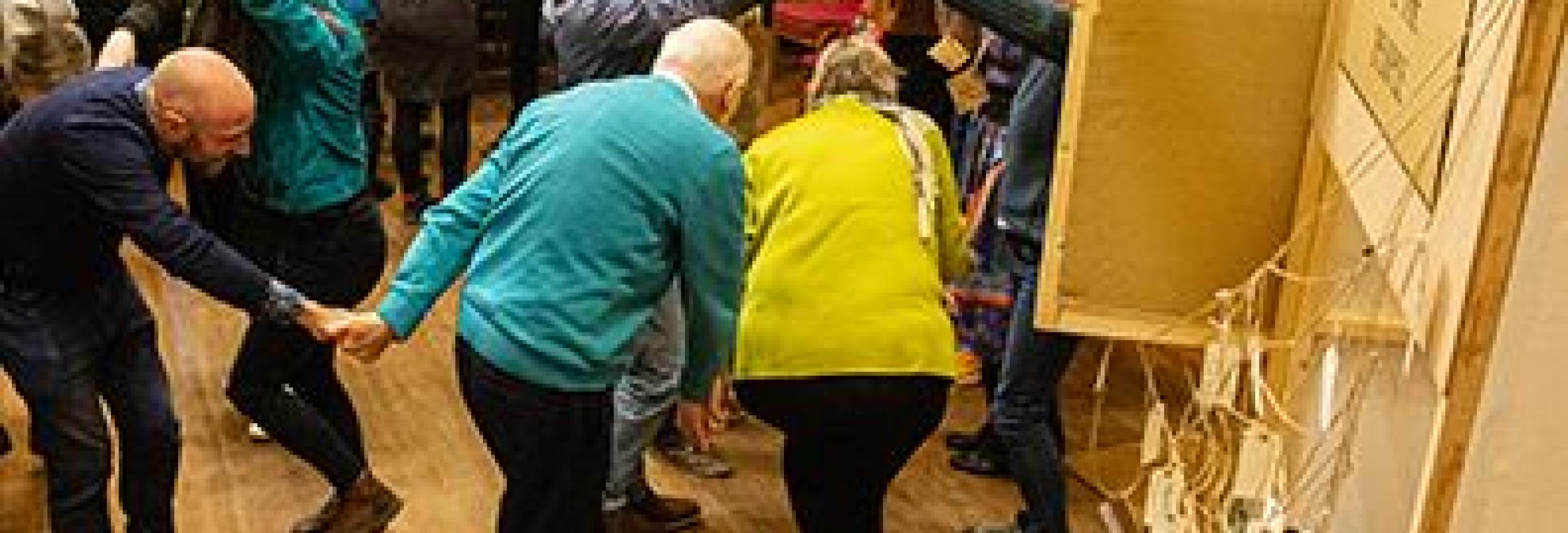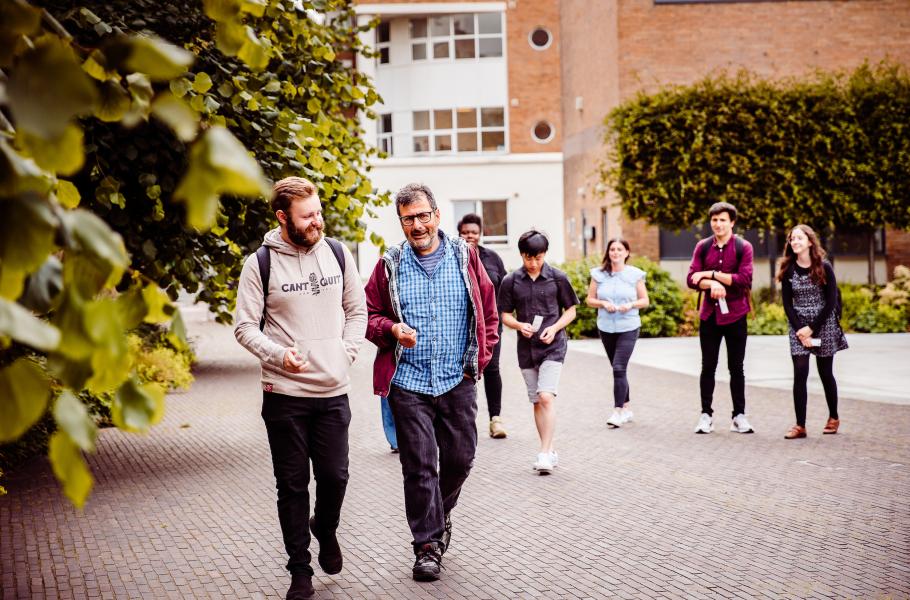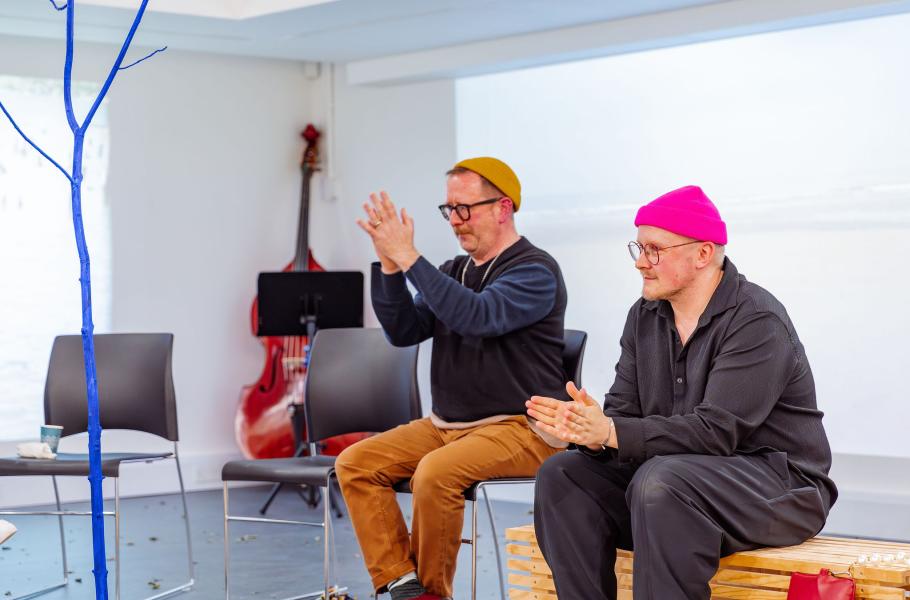A Conversation about The People’s Palace of Possibility
“If the thing is impossible, you need not trouble yourselves about it; if possible, try for it.”
John Ruskin
In November, The Bare Project hosted The People’s Palace of Possibility at the Gregson Centre in Lancaster as part of the Festival of Social Sciences with Lancaster University. The Palace focused specifically on the notion of ritual, stepping outside of everyday realities and creating visions for the future and welcoming a broad range of citizens including; artists, sociologists, local politicians, social activists, ecologists, and health & wellbeing practitioners. Over the course of the afternoon, palace citizens were invited to discuss future ideologies, engage in playful interactions, listen to policies they created themselves and dance together accompanied by a beautiful accordion. It offered space and time for the Lancaster community to come together and build a radical new vision of the future.
Lancaster’s Creative Producer, Charlotte Berry joined this group of Palace citizens and discussed the creation of the Palace with Malaika Cunningham, artistic director of The Bare Project.
Charlotte: Where did the idea for The People’s Palace of Possibility come from?
Malaika: Back in April of this year, whilst artists, the elderly and passers-by turned activists transformed Waterloo Bridge into a garden, I went to have a conversation with Clive Wilmer, then Master of John Ruskin’s Guild of Saint George. I have been working with the Guild for a number of years as part of Ruskin in Sheffield, and was going to speak with Clive about an installation we were creating as part of the bicentenary celebrations
My conversation with Clive began, predictably enough, with John Ruskin- his visions for the future and his political beliefs. However, mostly my conversation with Clive was not about the utopian projects of the past, it was about the future. Each thread of our conversation ended up in the here and now: how we live well today and into the future. We briefly questioned the contemporary relevance of a Victorian man, but the answer was obvious: the motivations of those on Waterloo Bridge, and the chants of the school strikers, they are the same as Ruskin’s. It is no coincidence that Ruskin’s famous maxim “There is no wealth but life” was recently stencilled across a huge billboard in Sheffield. This was not a commission by the Guild, but graffitied there by Extinction Rebellion. Perhaps the fundamental difference between Ruskin’s time and now is this: urgency. But in our urgency, we must remember and acknowledge that we are not the first to argue for these things- we stand on solid shoulders. So- the People’s Palace of Possibility really emerged from that: the urgent need for change, but also the acknowledgement that we need to learn from the past to move forwards.
Charlotte: And what actually is The People’s Palace of Possibility?
Malaika: Well, practically speaking the piece is part installation, part performance and part conversation. Each room of the Palace offers a different provocation, a different starting point- acknowledging that reflection, conversation and exchange have many different starting points. Imagining alternatives has become an urgent matter. One which requires playfulness, honesty, fear, hope and silliness in equal measure.
Charlotte: How did you initially create it?
Malaika: The Palace has developed through doing it really. We were commissioned by The Guild of Saint George to create an installation which brought Ruskin’s ideas into the present- to celebrate his bicentary. Really, what we wanted to draw out was Ruskin’s interest in future building: in creating a just and sustainable world. That is as important now as it was in 1819. The Palace’s first outing was at Theatre Delicatessen in Sheffield.
Charlotte: And where did it go from there?
Malaika: The Palace travelled to Warwick Arts Centre for CHANGE Festival and then on to Lancaster for the Festival of Social Sciences. We think the piece needs some refining, and then we are hoping for further locations…
How did you find it?
Charlotte: It was a really interesting afternoon, so much happened! It started with welcoming us as Citizens of the People’s Palace with warm cups of tea and chit chat, and then developed into sharing visions of a collectively created, newly envisioned world
I enjoyed how the buildings in the space created multiple layers to the room, the smaller areas to escape and listen to provocations of the past and the future, listening to voices discuss the change in our soil, water & air. The area I was most drawn to was the corner of the room - ‘the working area’, which offered the opportunity to create and build and re-build a town, a city, a new world even… It was a really therapeutic experience rolling clay with my fingers, helping to build the micro necessities while discussing present politics & climate crisis - although this may seem ‘heavy’ and not therapeutic, it was an enjoyable moment to discuss these things with a group of palace citizens, people I was newly introduced to. A community of people sat together, building together, talking together - it’s the dream, right?
Everything in the Palace was created out of cardboard with Sharpie titles! I enjoyed how the buildings in the space created multiple layers of experience, with opportunities to escape and listen to provocations of the past and the future; listening to audio recordings of conversations or poetry that addressed the changes in our soil, water and air. There was a Policy Making area in which people dreamed up the new policies that would help to create this new world and when they received anough votes, they were announced as Policy from a plinth. Emily Spiers from the Institute of Social Futures at Lancaster University offered a provocation on rituals and how they inform the future. The area I was most drawn to was the corner of the room - ‘the working area’, which offered the opportunity to create and build and re-build a town, a city, a new world even through clay… It was a really therapeutic rolling clay with my fingers, helping to build the micro necessities while discussing present politics and the climate crisis. Although this may seem ‘heavy’ and not therapeutic, it was so enjoyable to discuss these things with people I was newly introduced to, a group of Palace Citizens. A community of people sat together, building together, talking together - it’s the dream, right?
I found the communal area (which was the centre of the room) particularly interesting. There was so many questions flying around, I feel it was a moment where I was able to really try and understand my own thinking and ponder on other possibilities suggested by other Citizens. We were offered a coloured sticker which identified hope, fear or uncertainty. I chose pink (uncertainty)…Interestingly, throughout the afternoon citizens changed their sticker after conversations which may have infused ecstatic optimism or dooming fear.
Sue Gill offered a provocation as an artist and co-director of Dead Good Guides, which was hugely enlightening, opening up conversations on death. Something that really stuck with me was the carrying of the casket and how ‘traditionally’ men are the carriers because ‘traditional’ caskets are heavy… Sue informed us of the many possibilities of of how a funeral can be something for all to be involved in despite gender or age and that we have control over these decisions. In that moment of feeling optimistic and completely ready to plan my own funeral - an accordion energised the space and through sound we all came together and danced! Brilliant.
There were many wonderful moments within the palace, moments of hope, fear and uncertainty but what I can appreciate is that the People’s Palace of Possibility offered a very different experience for each of us and that this event is something that we ‘as citizens’ now own.
For more information about the company and The People’s Palace of Possibility please visit: www.thebareproject.co.uk




